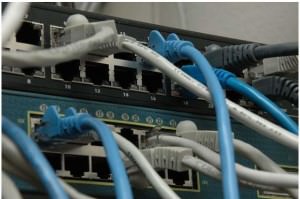4 Factors that Make Educational Technology Effective
The integration of technological tools in education provides plenty of benefits. It supports learning and teaching on different levels. Its impact ranges from the automation of routine tasks to global solutions that allow people to respond to challenges like unequal access to education or the COVID-19 pandemic.
Educational technology has revolutionized the classroom experience for both students and teachers. It offers advanced tools that modernize:
- content delivery;
- access to information;
- collaboration;
- progress tracking;
- student-student interactions;
- student-teacher interactions.
Therefore, education technology goes far beyond the use of computers or mobile devices in the classroom. Take a look at four factors that make educational technology effective.

It Enables Personalized Learning
Edtech has everything students might need to personalize their learning experience. In the first place, it refers to 24/7 access to learning materials. It means that students can learn anytime they want and figure out what work-life-study balance works best for them. Learners can also choose the format of their classes and go for traditional, online, or blended learning.
Furthermore, students enjoy individualized learning plans that are specifically tailored to their needs and interests. Aside from existing classroom topics, they can use supplemental learning materials that come in different formats. According to the PBS survey, 74 percent of teachers agree that technology helps them to enhance classes. They use learning analytics to choose the most appropriate resources for each student.
Personalized learning helps to develop students’ strengths and fix problem areas. They get the necessary qualities and skills that make their domyessay writing service stand out. Therefore, plenty of flexible learning materials provided by edtech give the much-needed support that helps students succeed.
It Creates More Opportunities for Collaboration and Communication
Educational technology provides tools for effective communication and collaboration. Students can interact with their classmates and get feedback from teachers whenever they need it. It is especially valuable for online classes where edtech eliminates social isolation and supports the development of learning communities.
Digital tools provide a collaborative space for students. Here, they can play learning games and work on projects together. Joint problem solving allows students to take part in discussions and support each other on their learning path.
In a traditional classroom setting, group work sometimes turns into a mess. Tasks may not be distributed equally, which prevents some students from expressing their ideas. In contrast, educational technology provides tools for project management that make collaboration easier. They assist in tracking the performance of each student and keep everyone focused.
Communication and collaboration are more straightforward and clear. It becomes easier to share and process information as students can access, examine, and edit a document or project in real time. Shared experience is the core of active and equal participation and better learning outcomes.
It Improves Engagement
Young people are digital natives. They use technology daily and are interested in new developments. Thus, leveraging technology in education is a natural thing. According to the survey published by Promethean, 84 percent of teachers view technology as a tool to increase engagement. It helps to turn all members of a learning community into active learners who are motivated to participate in classroom activities.
Educational technology also facilitates the delivery of content in an exciting way. This sparks curiosity in students and helps to improve knowledge retention rates. Students become focused and excited to learn more and discover new things.
Immersive learning is a new big trend in edtech that is especially effective for increasing engagement. It makes a virtual learning environment similar to real life with the help of VR and AR. As a result, learners become mentally and emotionally engaged in the process. They get full-body experience and a sense of presence that awakens their curiosity and contributes to better learning outcomes.
It Makes Teaching More Productive and Efficient
Educational technology also has an immense impact on teachers and their instructional practices. They get a ton of extra materials that can be helpful in the classroom. Besides, teaching becomes more productive with edtech. It speeds up and automates many processes. Thus, teachers can do more without adding extra working time to their day.
If students have difficulties with their studies, they can review lectures on their own. Teachers do not need to repeat the same information. Furthermore, they can offer students learning materials in different formats. It makes their course suitable for all learning styles.
Edtech has also become a useful source of data on student performance. Learning analytics provides valuable insights and allows identifying students who underperform to offer them extra support. Moreover, convenient data collection and analysis help in administration. Routine tasks like testing or grading become automatic. So, educational technology makes a difference for both students and teachers.
Wrapping Up
Educational technology continues to evolve and present new and new products to respond to students’ needs. To a great extent, it shapes the future of education. Digital tools appear in every aspect of the educational system. They facilitate communication and improve the efficiency of classes, making the learning process more engaging and personalized.



